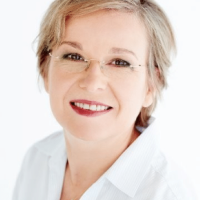Clinical decision support software (CDSS) – how it is regulated in Australia
TGA publishes new guidance on exemption criteria for clinical decision support software (CDSS)
In August 2022, the Australian Therapeutic Goods Administration (TGA) published a new guidance on exemption criteria for certain clinical decision support software or CDSS. This guidance further clarifies TGA’s position on software used in healthcare facilities, after the 2021 amendments to medical device regulations which introduced new requirements for software-based medical devices, including:
- clarifying the boundary of regulated software products (including ‘carve outs’)
- introducing new classification rules
- providing updates to the essential principles relevant to software-based medical devices.
In past years, during meetings with industry, it was apparent that some health software developers were not clear weather their products such as healthcare software used in clinics and hospitals were affected by regulatory requirements for software as medical device (SaMD). There had even been alarmist calls that the regulatory amendments would result in previously unregulated or class I software products being regulated as high-risk class III products. None of those fears materialized.
In 2021, the TGA published a guideline with explanations and examples that clarify the boundary for software-based products – which products are regulated as medical devices and which are exempt or excluded (or ‘carved out’ of the regulation), to ensure sponsors and manufacturers of software-based products are not subject to unnecessary regulatory oversight.
The distinction between “exempt” and “excluded” is important, as is checking whether the intended purpose of a software product meets the definition of a medical device.
- “Excluded” means that the software products are completely unregulated by TGA because they do not fall under the definition of a medical device (provided in Section 41BD of the Therapeutic Goods Act 1989); examples include consumer health products (wellness, self-management of non-serious condition, behavioral change, patient surveys); enabling technology (telehealth consultation enabling software, software for management of health processes or facilities, transmission and storage of imaging records); digitization software (simple calculators of clinical outputs, electronic patient/health records); population based analytics for the collection and analysis of class, group or population data that are not intended to be used for clinical use cases for individuals; and laboratory information management systems that allow laboratories to automate workflows, integrate instruments, manage orders and samples and associated information.
- “Exempted” means that TGA retains some regulatory oversight (advertising, adverse events, notification), but they are not required to be approved by the TGA prior to supply, and do not need to be included on the Australian Register of Therapeutic Goods (ARTG); examples include certain CDSS such as software intended to compare patient symptoms and test results with available clinical practice guidelines and recommend condition-specific diagnostic tests, investigations or therapy to a health practitioner; surgical workflow software that describes the steps of a surgical procedure to a surgeon based on accepted clinical guidelines.
The previous TGA guidance on CDSS (October 2021) stated that a CCDS is exempt if it meets all three of the following criteria:
- does NOT directly process or analyse a medical image or a signal from another medical device (including an in vitro diagnostic device); and
- is solely used to provide or support a recommendation to a health professional about prevention, diagnosis, curing or alleviating a disease, ailment, defect, or injury; and
- does NOT replace the clinical judgement of a health professional in relation to making a clinical diagnosis or decision about the treatment of patients.
If any of these criteria are not met, the CDSS is not exempt and requires inclusion in the ARTG.
The latest 2022 TGA guidance on CCDS (August 2022) includes useful real-life examples, and provides additional comprehensive information for the exemption criteria. According to these latest guidelines, a CDSS is exempt only is it meets all three exemption criteria set out in the table and reproduced below:
- Intended by its manufacturer to be for the sole purpose of providing or supporting a recommendation to a health professional about preventing, diagnosing, curing, or alleviating a disease, ailment, defect, or injury in persons
- Not intended by its manufacturer to directly process or analyse a medical image or a signal from another medical device (including an in vitro diagnostic medical device)
- Not intended by its manufacturer to replace the clinical judgement of a health professional in relation to making a clinical diagnosis or decision about the treatment of patients.
An additional table provide clarification on the distinction between:
- Making a diagnosis vs. making a recommendation about diagnosis; and
- Specifying treatment vs. making a recommendation about treatment
The following legal requirements apply to exempt CDSS:
- Sponsors must notify the TGA of their exempt CDSS devices. You must notify the TGA using the Notification form: Clinical Decision Support Software Exemption within 30 working days of supply. Following notification to the TGA, you are able to supply the device if you believe it to be exempt.
- Sponsors of exempt software must ensure it meets the relevant essential principles for safety and performance of medical devices. The essential principles describe the fundamental design and manufacturing legislative requirements. More information on the essential principles can be found in the Manufacture of medical devices: Quality management | Therapeutic Goods Administration (TGA).
- The TGA can take regulatory action such as a recall or issuing a hazard alert if there is a problem with the device.
- Sponsors must report adverse events to the TGA.
- Sponsors must comply with the advertising requirements for therapeutic goods
The regulation of software-based products and addressing borderline issues between medical devices and non-medical devices has come a long way since early consultations between industry and the TGA. TGA has committed to continue reviewing exemption notifications periodically to ensure they are being applied correctly.

VAL THEISZ
MSC RAC IS ECLEVAR AUSTRALIA’S VP CLINICAL & REGULATORY AFFAIRS
Val Theisz has been Principal Consultant, Co-founder and non-executive Director, Certification Body Australia
Val is a regulatory affairs professional with over 15 years of experience in medical devices of all risk classes, including life-sustaining, high-risk active implantables, and software as medical devices (SaMD) using Artificial Intelligence (AI) algorithms. Val has a Masters degree in electrical engineering and holds Regulatory Affairs Certification credentials for EU and US regulations (RAC EU, RAC US) from the US- based Regulatory Affairs Professionals Society (RAPS).
Val’s experience within the field covers clinical trials for high-risk innovative medical devices; submissions and pre-market approvals in established markets (CE Marking, FDA 510(k) and PMA, TGA registration). Val has also been the Director of Regulatory & Clinical Affairs, Code of Practice with the Medical Technology Association of Australia (MTAA), leading industry advocacy initiatives with the Therapeutic Goods Administration and the Australian Department of Health.

